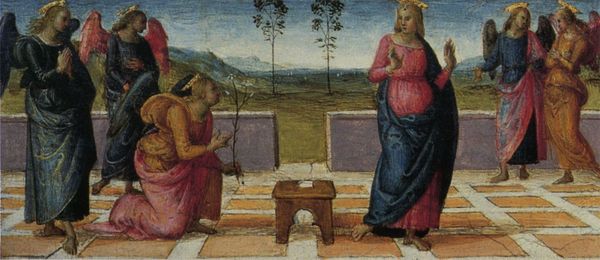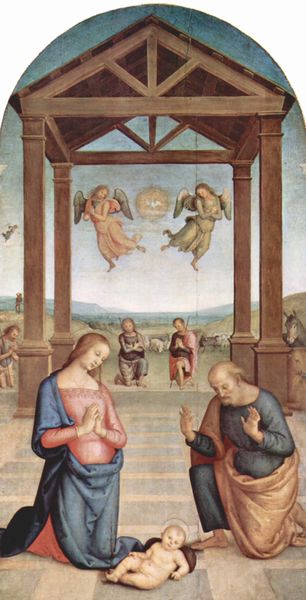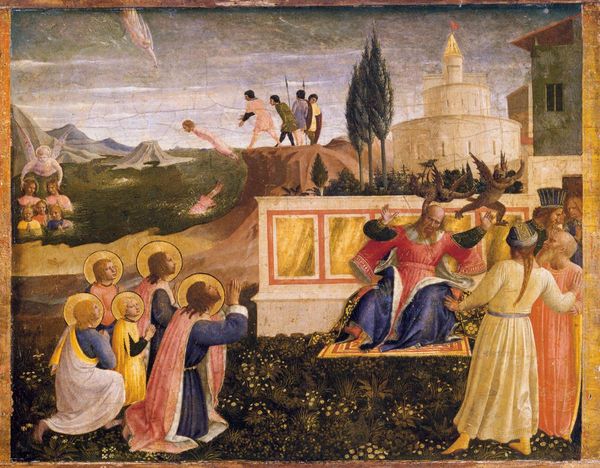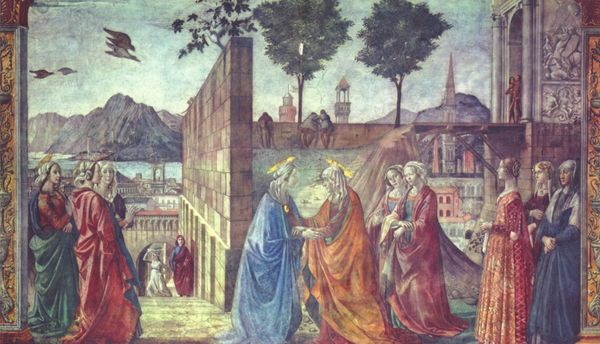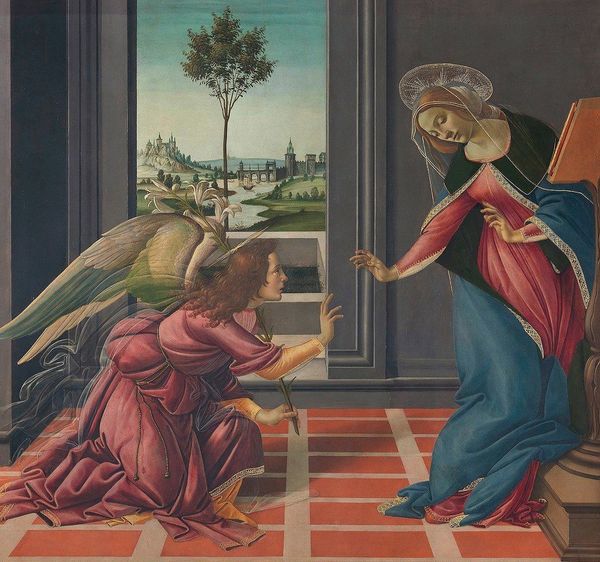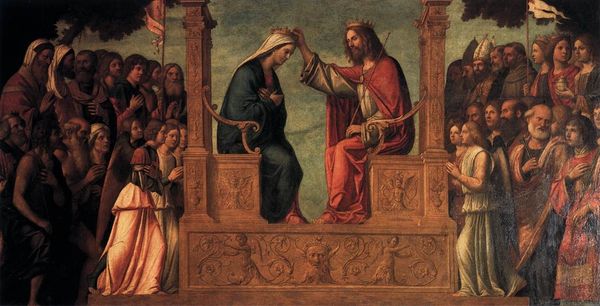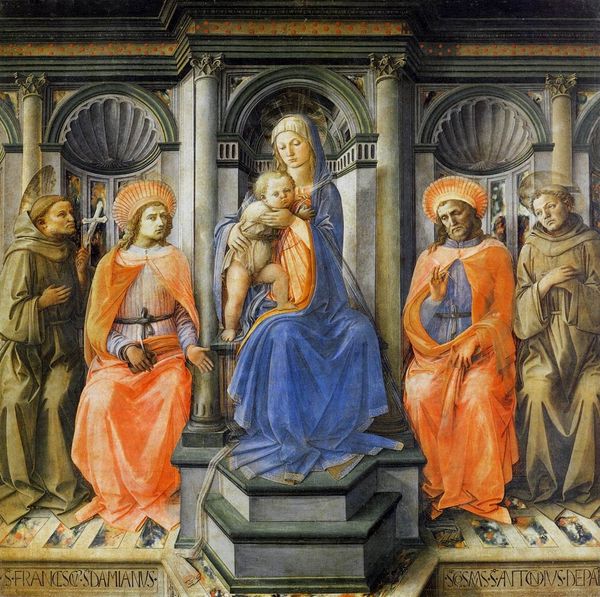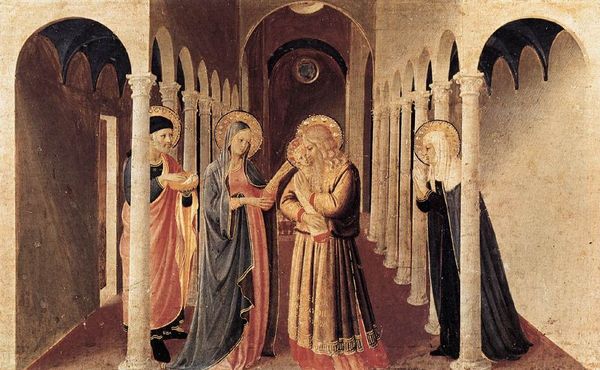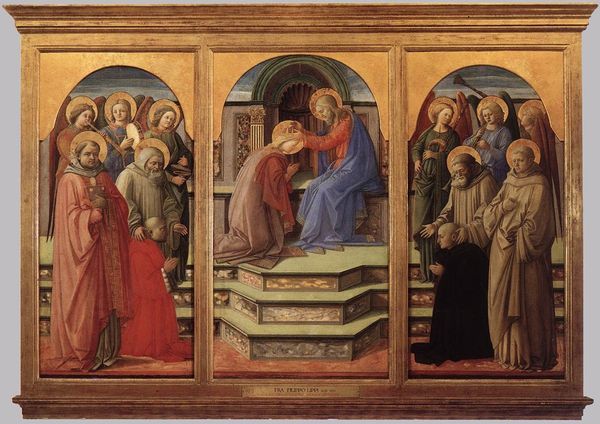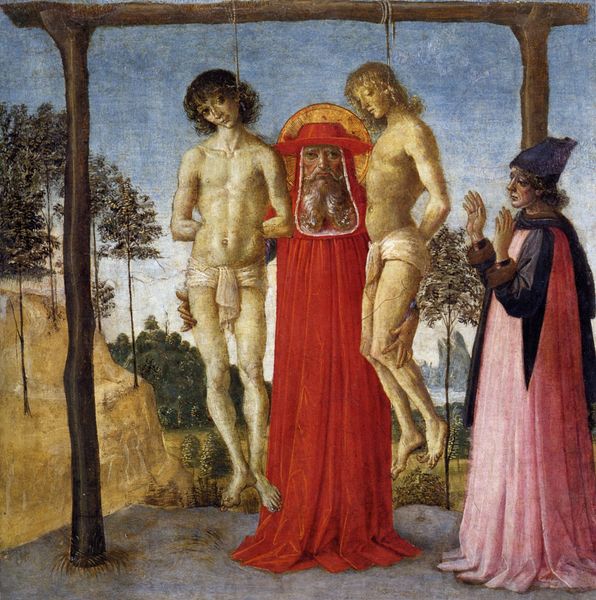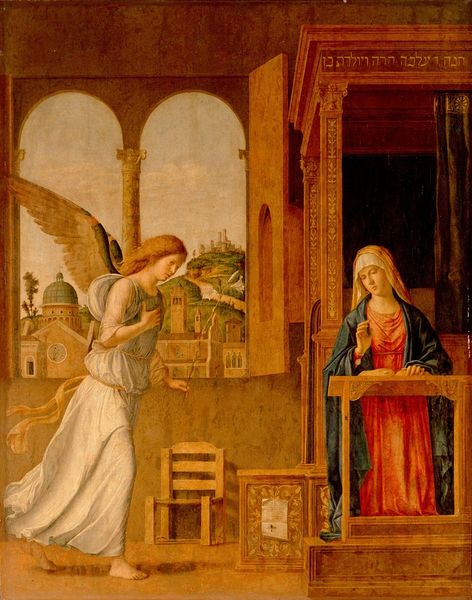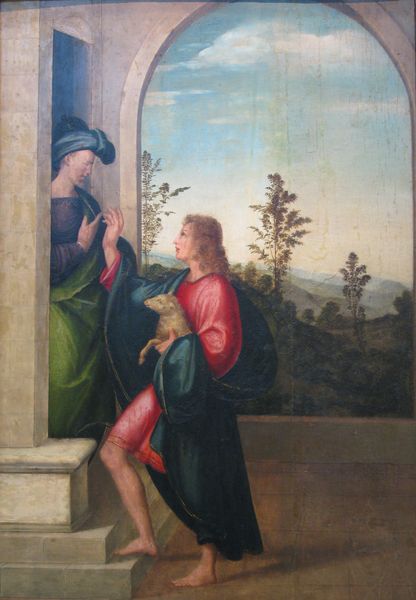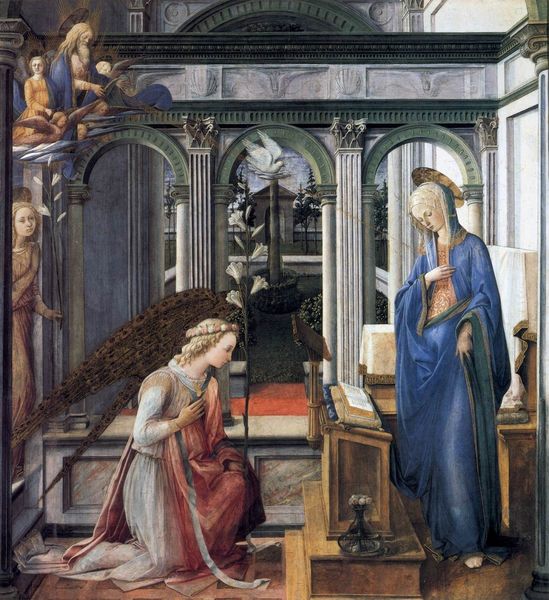
tempera, painting, oil-paint
#
portrait
#
tempera
#
painting
#
oil-paint
#
perspective
#
figuration
#
oil painting
#
christianity
#
history-painting
#
italian-renaissance
#
early-renaissance
Copyright: Public domain
Editor: Here we have Pietro Perugino's "Pala di Corciano (Annunciation)," painted around 1513, in tempera and oil paint. The first thing I notice is the almost mathematical precision of the composition; everything seems so carefully balanced. How do you read this work? Curator: Indeed. The appeal rests on its formal qualities, a calculated harmony. Note how Perugino employs a rigorous linear perspective, anchoring our gaze and dividing the scene into distinct yet balanced zones. The symmetrical arrangement around the central columns invites us to examine the painting as a study of proportion and spatial relationships. Do you observe the way the architecture itself mirrors the angel and Mary? Editor: Yes, it's like they're each framed within their own architectural space, which are in turn mirror images of one another! I suppose the color contributes to this effect as well? Curator: Precisely. The carefully modulated palette – the subdued blues, reds, and greens – serves not merely to depict but to construct an atmosphere of serene contemplation. Ask yourself how the subtle gradations of light and shadow shape our understanding of form and depth. Consider how the foreground’s details lead to the atmospheric background, constructed as receding planes, each adhering to calculated proportions. Editor: So, even beyond the religious narrative, there's a deep focus on structure and form for its own sake. What do you think Perugino tried to transmit in this particular artwork through these specific compositional features? Curator: To my mind, this work functions as a philosophical treatise. It elevates Renaissance ideals of order, reason and controlled expression into the realm of the visual. Perugino has used art to celebrate the intrinsic harmony and order of the universe, as well as express its divinity, without focusing primarily on storytelling. Editor: That’s fascinating; I hadn’t considered that. So much to consider beyond the subject itself. Curator: Exactly. By prioritizing the elements and principles, one understands the narrative more fully.
Comments
No comments
Be the first to comment and join the conversation on the ultimate creative platform.
